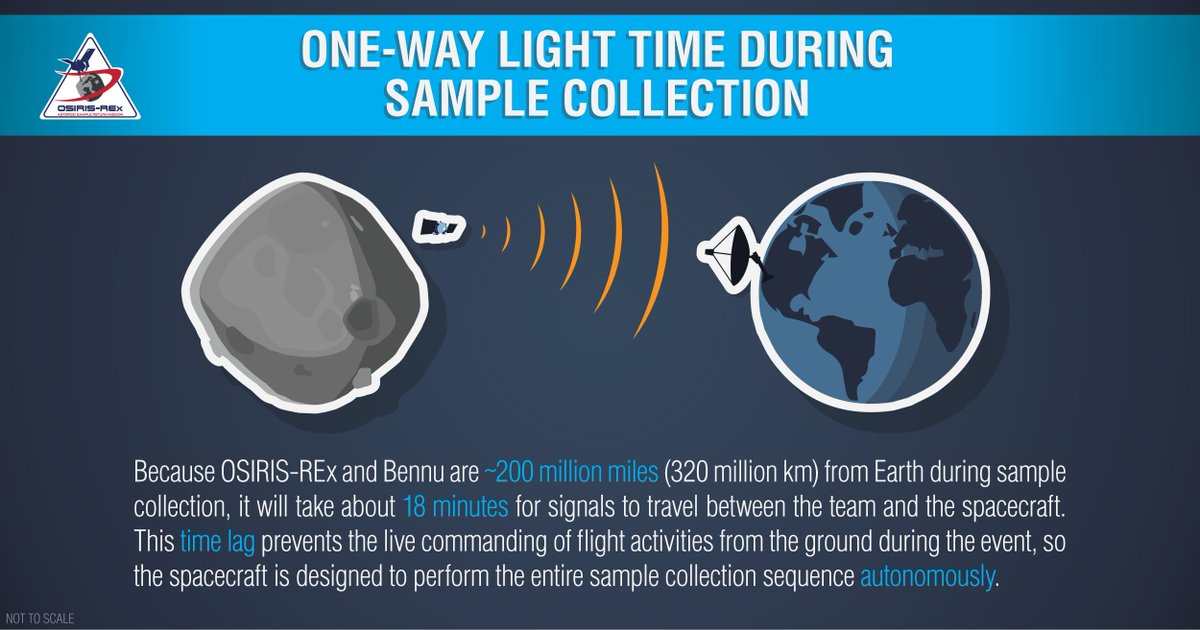Over the next few months, I’ll perform medium and low passes over sites Nightingale and Osprey — getting as close as 820 ft (250 m) to the surface 😱
My first rehearsal for sample collection is in April. I’ll practice leaving orbit, maneuvering to a checkpoint 420 ft (125 m) above Nightingale, and returning to orbit. In the second rehearsal I’ll fly even closer to Nightingale, hovering just 164 ft (50) m above Bennu’s surface.
TAG will be here before we know it. Let the sample collection countdown begin ⏱
Read more about what’s next: bit.ly/37MDrGr
Read more about what’s next: bit.ly/37MDrGr

• • •
Missing some Tweet in this thread? You can try to
force a refresh













